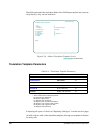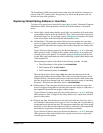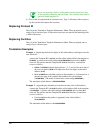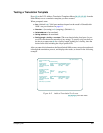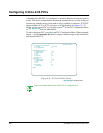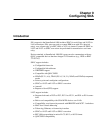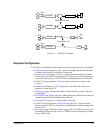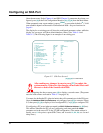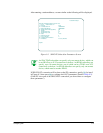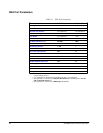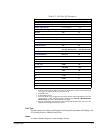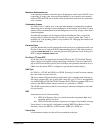
9-2 SmartSwitch 1800 4.0 User Guide, Rev 01
Each SNA port can be configured to support SNA hosts (PU 2.1, 4.0 HPAD; NPAD)
or terminals (PU 1.0, 2.0, 2.1 TPAD). A port can also be configured for a transparent
mode (XPAD), which supports HDLC and any of its subset protocols, such as SDLC
(IBM), LAPB (ISO), and BSC (bisync).
LLC2 (Logical Link Control type 2) support in the SmartSwitch 1800 provides a local
or remote connection over frame relay (via RFC1490) or X.25 (via QLLC) between
two SNA devices, one attached to a LAN and the other attached to either another LAN
or a frame relay-compliant SNA/APPN device. Each SNA host and terminal accessing
the SmartSwitch—via SDLC, LLC2, frame relay, or X.25—will appear to a local
LLC2-attached terminal or host as if it is directly connected to the local LAN.
LLC2 support in the SmartSwitch 1800 includes the following scenarios, some of
which are diagrammed in Figure 9-1 (on page 9-3):
●
Connection between a LAN-attached host/workstation and SNA devices, via
SDLC-to-LLC2 and LLC2-to-SDLC conversion, over a frame relay or X.25
network (example 1), or frame relay PVC (example 4).
●
Connection between LAN-attached workstations, over a frame relay or X.25
network (example 2), or a frame relay PVC (example 3).
●
Connection between workstations attached to different LANs on the same
SmartSwitch.
Support of end-to-end LLC2 connections requires that the full LLC2 pro-
tocol (not LLC2-R) be configured and loaded in the RLP file, as described
in Chapter 5. (LLC2-R does support conversion.)
Protocol conversion is accomplished by terminating an SDLC connection in the
SmartSwitch and establishing an LLC2 connection to the SNA host.
The following figure shows some examples of SDLC and LLC2 configurations. Note
that the LANs shown are all Token Ring. The same examples can be presented with
Ethernet LANs.



